To sew the cuff to the top of the upper, the sides of the leather have to be considered. Align the stitching holes in the cuff with the top of the upper. The cuff should be inside the moc, with the outside of the cuff against the inside of the upper. When the cuff is sewn and folded out of the moc, the sides of the leather will match. When the collar is turned up into a boot, it will be wrapped with thong.
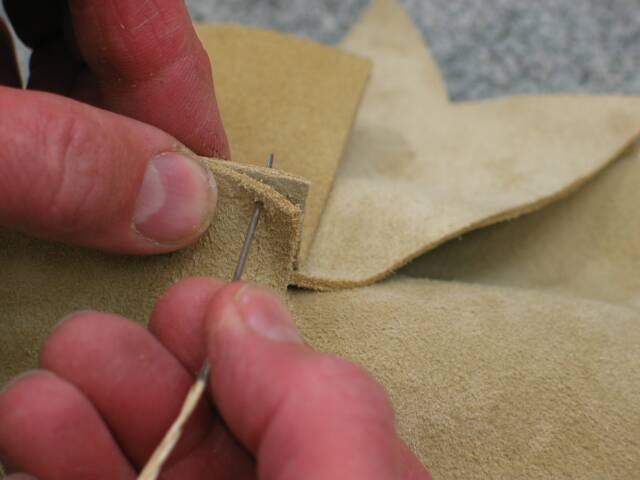
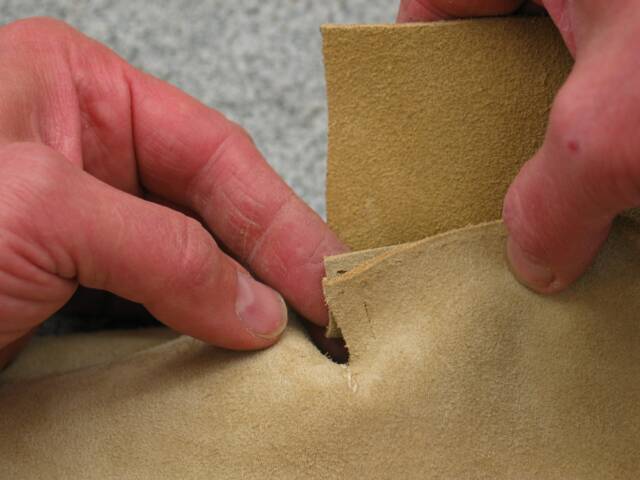
Prepare the thread and needle as before, still using one needle on one end of the thread. Again, start in the second hole.
Leave a tail of the thread free to be stitched over to hold it in place.
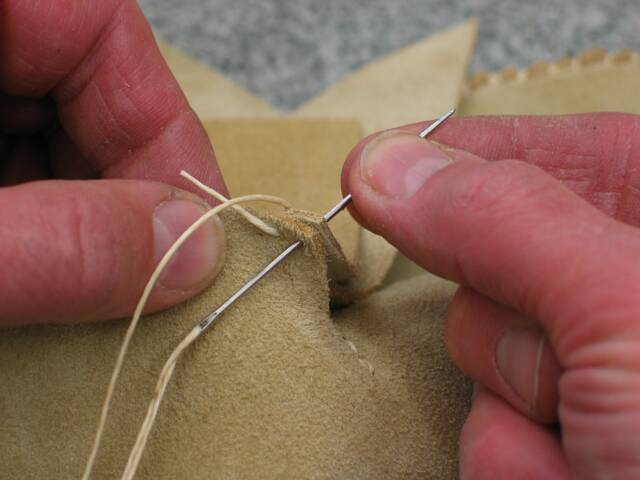
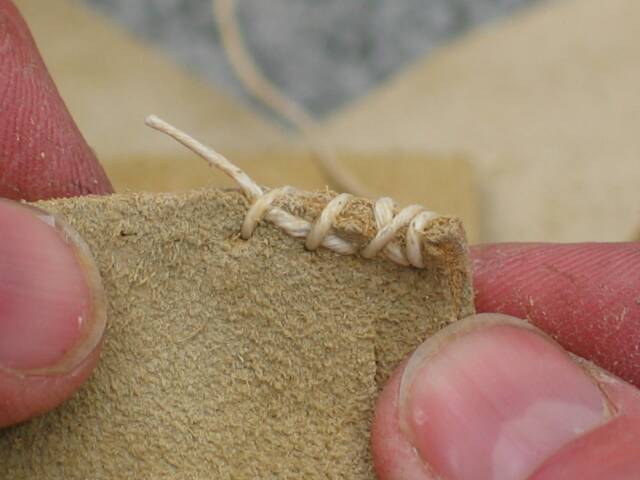
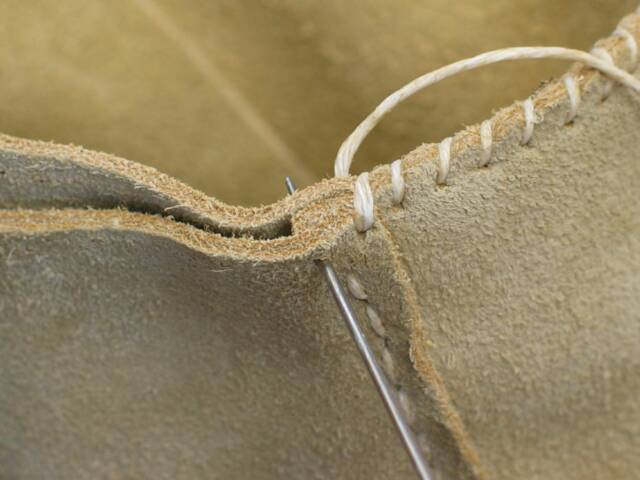
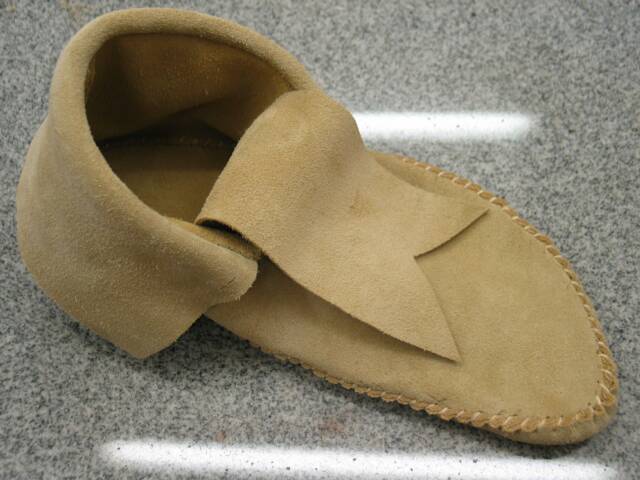
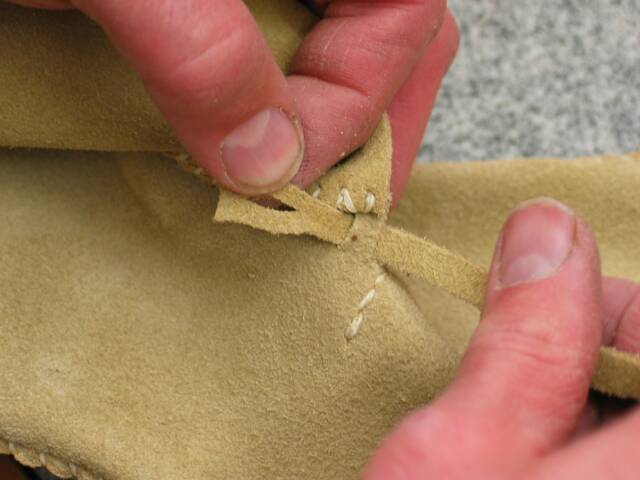
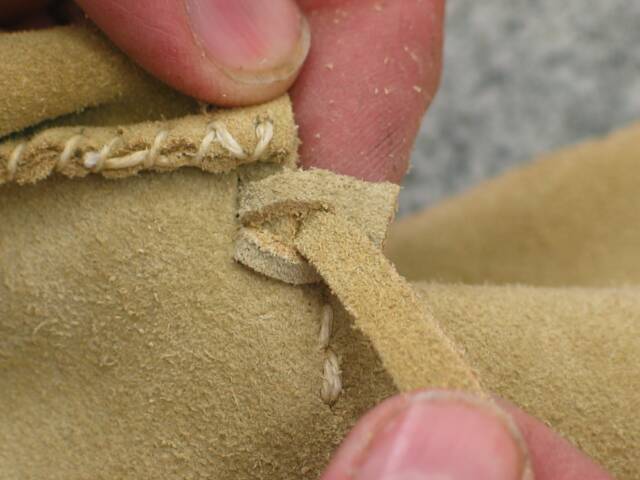
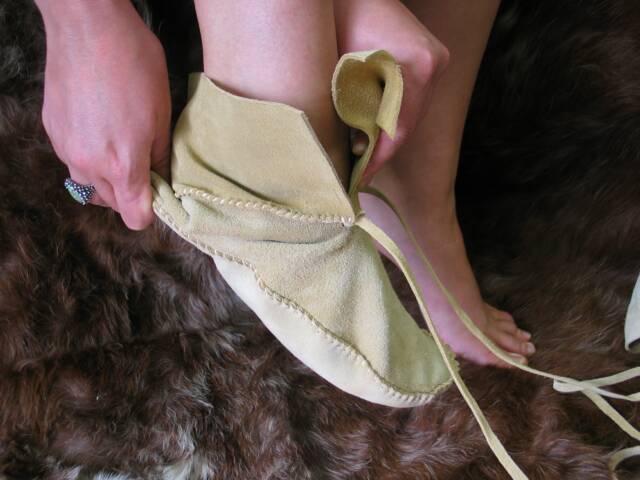
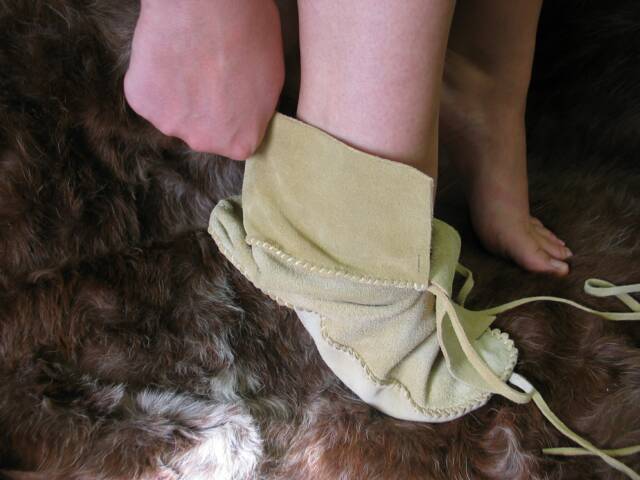
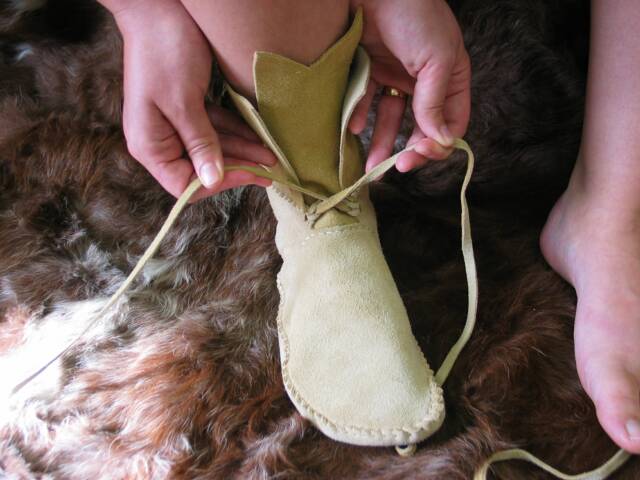
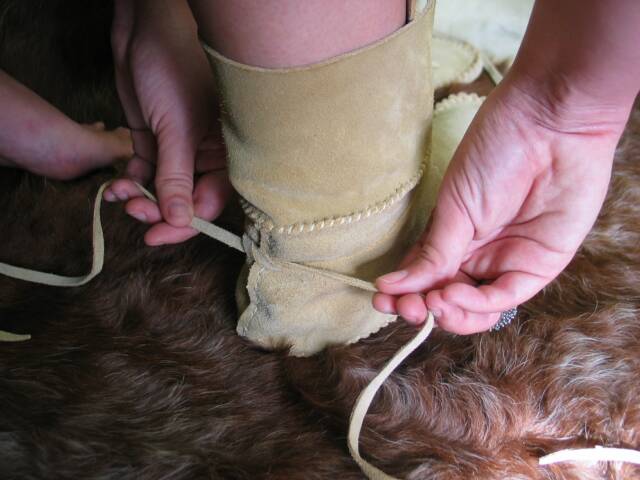
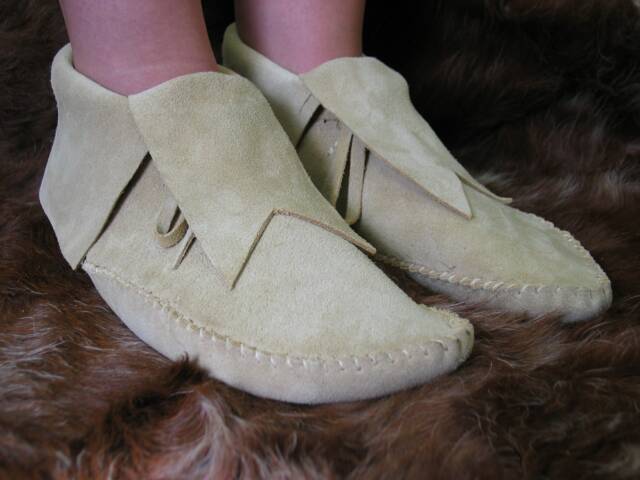
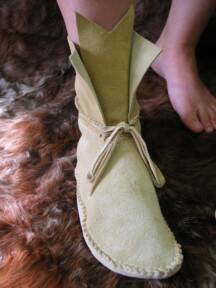
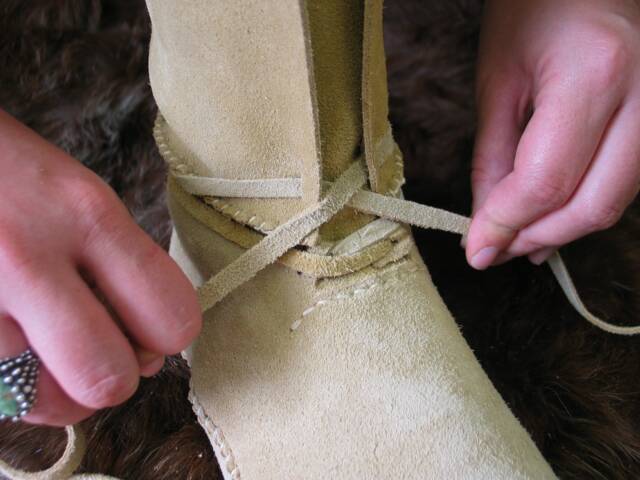
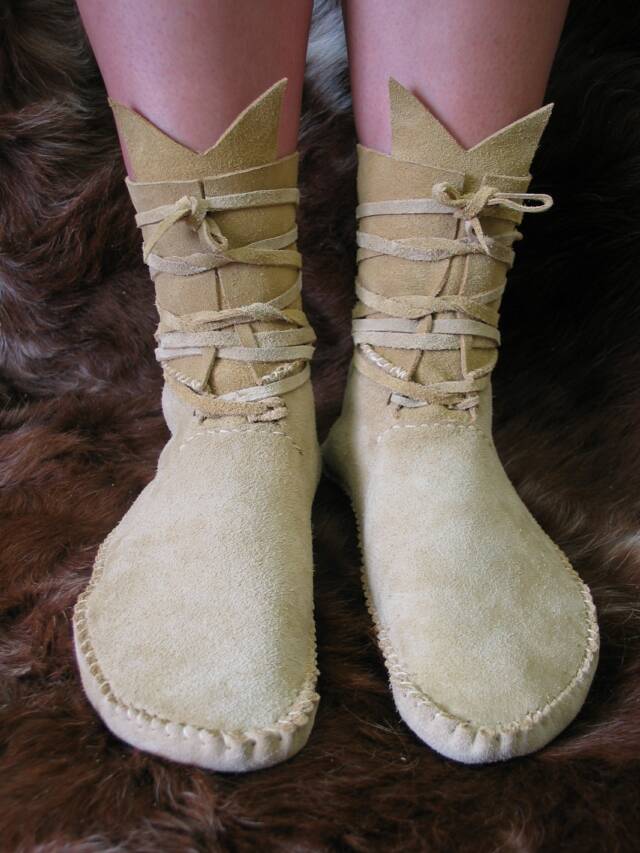
Loop around and run the needle through the first hole as shone. Pull the thread tight, holding onto the tail to keep it from slipping through the stitching holes. Then, run the needle through the first hole again for extra strength in the stitching at the edge of the cuff and upper.
From the first hole, stitch back through the second hole and continue along the line of stitching holes. Notice the stitches are capturing the tail of the thread to hold it all in place.
Stitch around to the heel seam. Here, there are two layers of leather where the uppers form the heel seam. The cuff will be stitched through the heel seam with two stitching holes. They are on either side of the heel seem stitching, as shown in this photo. It is important to make sure you catch both stitching holes and don't throw-off the alignment with the stitching holes in the cuff.
When you reach the end of the cuff/upper stitching, run the needle back through several stitches to hold it in place. Snip off the thread and fold your cuff to the outside. It should look like the photo, with the sides of the leather matching.
If you never intend to wear your cuffs up as boots, you don't need long laces. They just need to be long enough to wrap around your heel once and tie in front. This length will vary from individual to individual.
To attach lace, run it through the slot in the upper as shown.
Pass the end of the lace through the slot in the wide end of the lace and pull tight. Your lace is locked onto the upper, but can be removed very easily.
First Nation moccasins are not made to be slippers. They are designed for every type of activity. Authentically designed mocs don't just slip on. To get your foot in your mocs, hold them by the heel and tongue as shown. Jam your toes down into the toe of the mocs as far as they will go. Then, shove 'em a little farther.
Then, tug on the cuff above the heel. It will be tight, but your heel will pop in once you get past the ankle portion of the moccasin.
Cross the laces over each other in front.
Cross them over each other again at the heel of the moc and put a simple over-under knot at the back. Don't pull it too tight. Make sure it is below the seam where the cuff is sewn to the upper.
Tie the laces in a bow as shown in the photo insert.
Then, fold down the cuff and the tongue. You have the Sky Ute moccasin in its low-top configuration.
To wear the mocs as a boot, use a longer lace. I like to be able to wrap the lace around my ankle five or six times. The length will vary for each individual.
Start by crossing the laces in front and tying them in back as before. When you wrap around to the front, pass the laces through the slots in the cuff as shown in the photo. Then, wrap and tie, back and front, till you run out of thong.
Here you have the mocs in their boot configuration with the thongs wrapped and tied at the top.
As your moccasins break-in, the leather with stretch and conform to your feet. The thongs will stretch as well. I prefer to cut my thongs too long and wear them for a while. If I decide they are too long after the break-in period, I cut them to the length I want 'em.
I like to rub deer tallow into my mocs to improve the wear and serviceability. My wife doesn't like the smell of the tallow so I have to keep my feet off the furniture. Any number of products can be worked into the leather of the mocs, but nothing is goin' to make 'em waterproof or warm in the snow.
After they are broke-in, wool socks can be worn inside to improve comfort. But, other than that, they are just moccasins. Like the saying goes, "It's not a bad way to go barefoot."